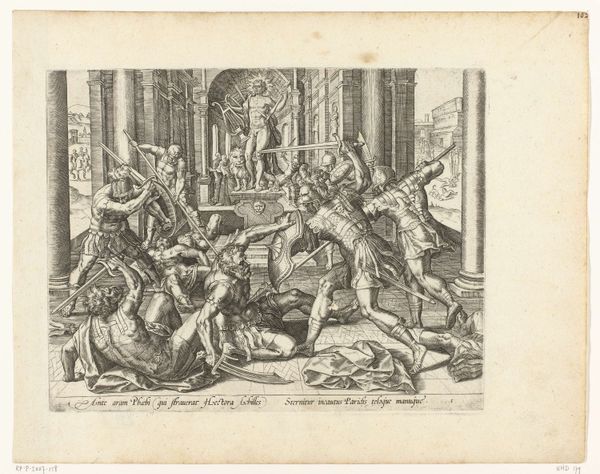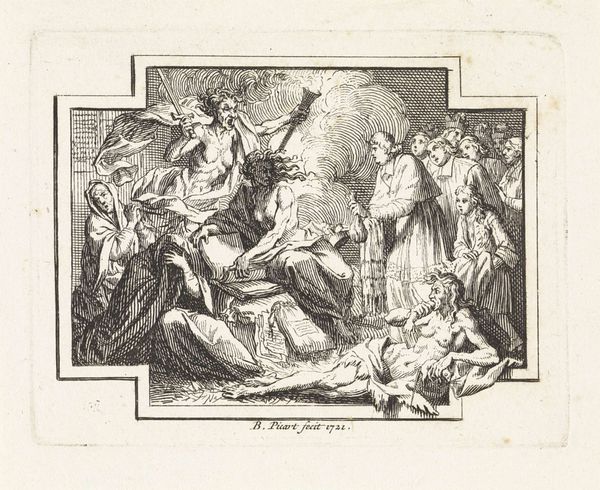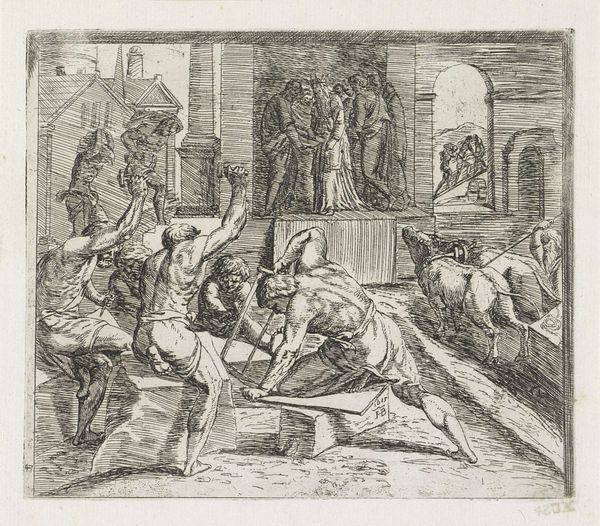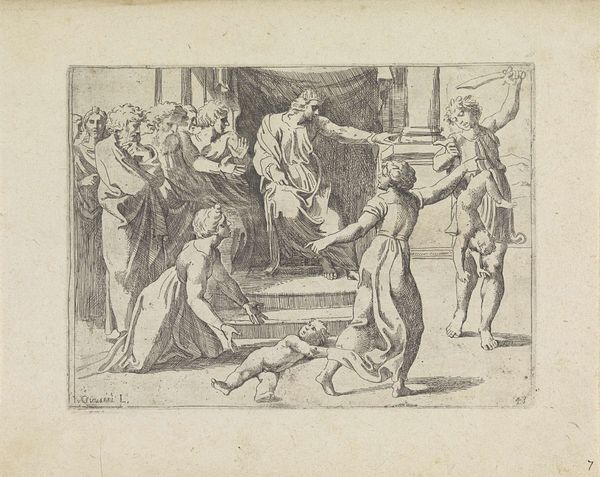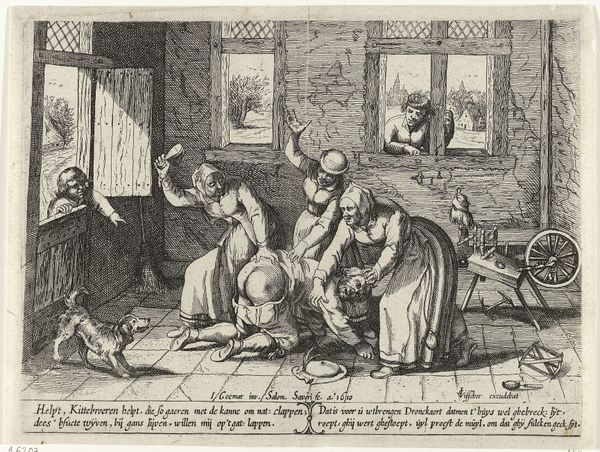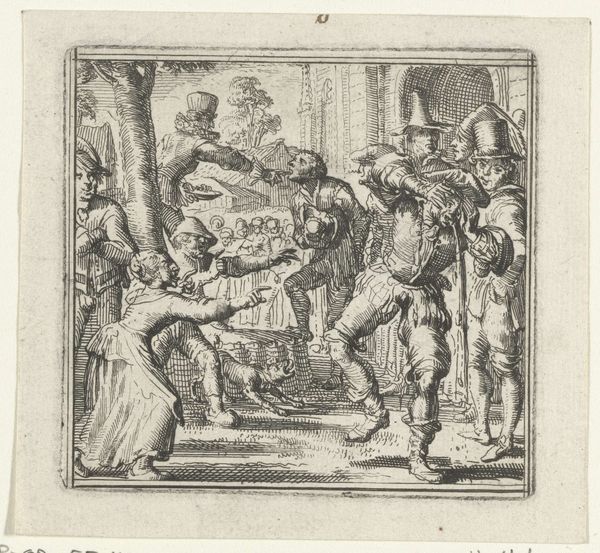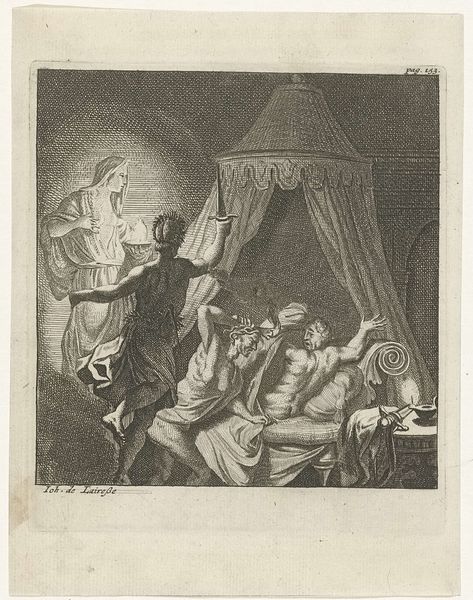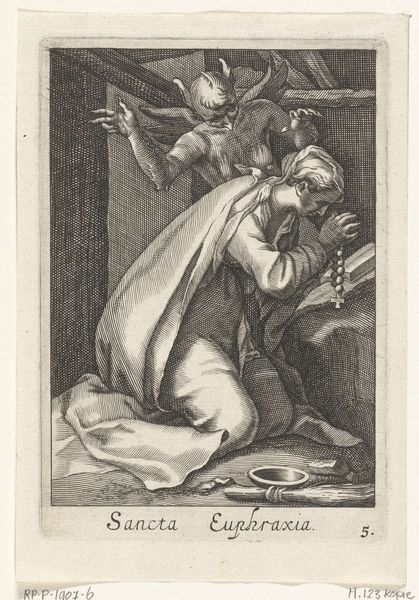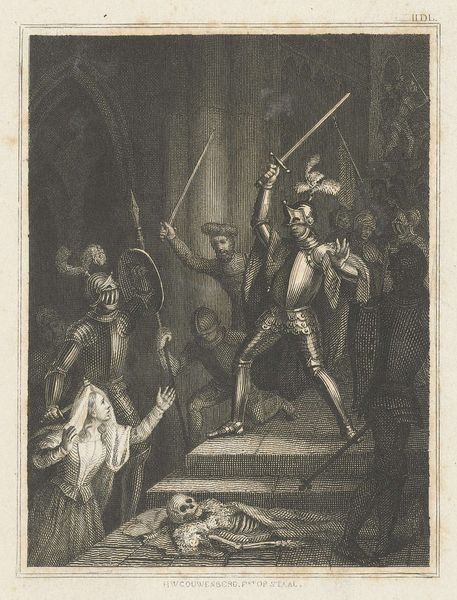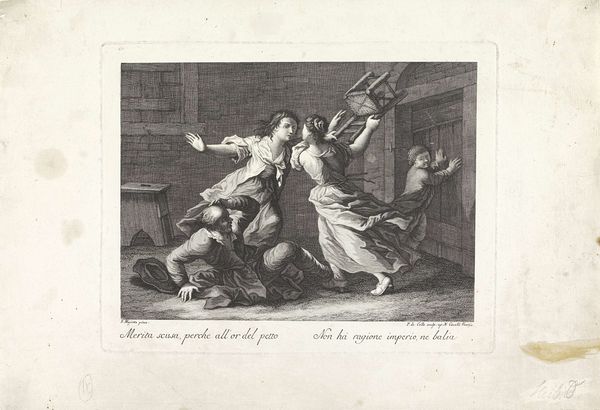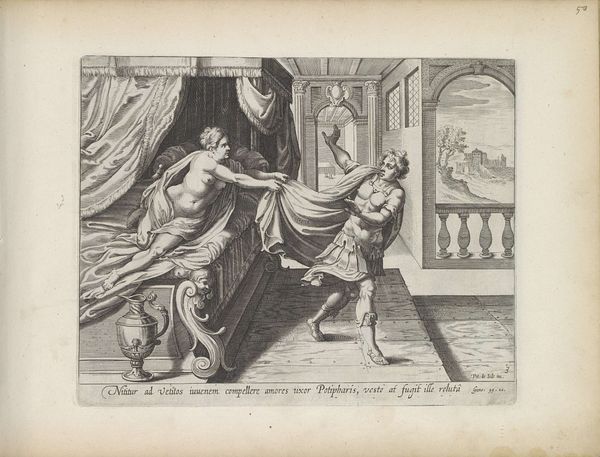
#
aged paper
#
light pencil work
#
pencil sketch
#
old engraving style
#
sketch book
#
personal sketchbook
#
sketchwork
#
sketchbook drawing
#
storyboard and sketchbook work
#
sketchbook art
Dimensions: height 73 mm, width 78 mm
Copyright: Rijks Museum: Open Domain
Curator: Here we have Romeyn de Hooghe's "Illustratie voor de Decamerone van Boccaccio," dating back to 1697. Editor: Oof, it's intense! Looks like someone is *really* regretting their choices. The level of frenzy the characters are in really vibrates off the artwork. Curator: De Hooghe was quite known for his etchings and engravings, and you can see his masterful handling of line to create such a vivid sense of drama, he's not afraid to tackle quite touchy subjects and put his view out there. It speaks to Boccaccio’s stories and the social mores, and perhaps the hypocrisy, of the time. Editor: Hypocrisy, definitely, there is an almost cartoonish zeal to the whacking! And there is someone looking in the window...are they in on the drama too, or merely observers of public violence and humiliation? The upturned pot also conveys turmoil, like, "Oops, I just spilt the beans… and everything else!” It's a great touch. Curator: These illustrations, though commissioned, were often avenues for artists to comment on, even critique, societal structures. This wasn’t just about depicting a story, it was about offering a perspective on power, justice, and morality. Editor: Makes you wonder if de Hooghe saw a bit of himself in both figures. There's a vulnerability to both, even with that flailing instrument in the whacker’s hand. Almost as though the roles could easily be reversed, or perhaps already have been! Curator: Exactly, and in that ambiguity lies its power. It's a stark depiction, definitely provoking thought. De Hooghe understood how to engage an audience, not just entertain them. Editor: Agreed. It really highlights the power of storytelling through visual arts – it goes beyond mere decoration to become social commentary. Curator: Well put, indeed, the artwork encourages discussion about what shapes a society.
Comments
No comments
Be the first to comment and join the conversation on the ultimate creative platform.
